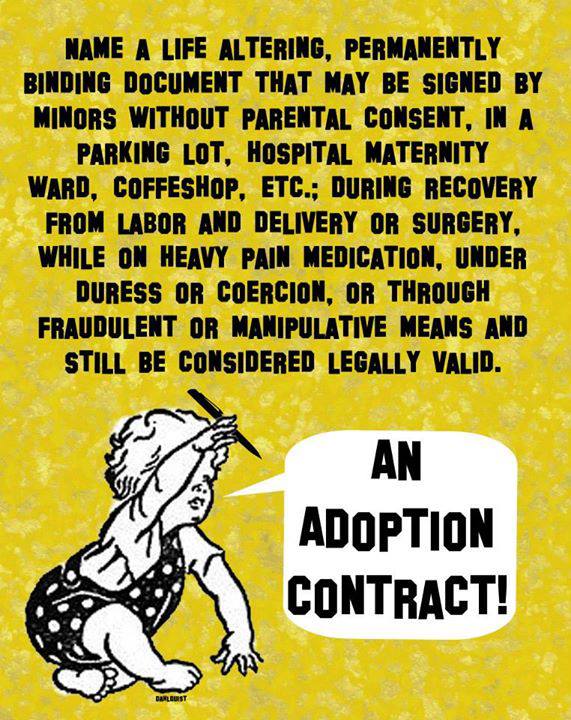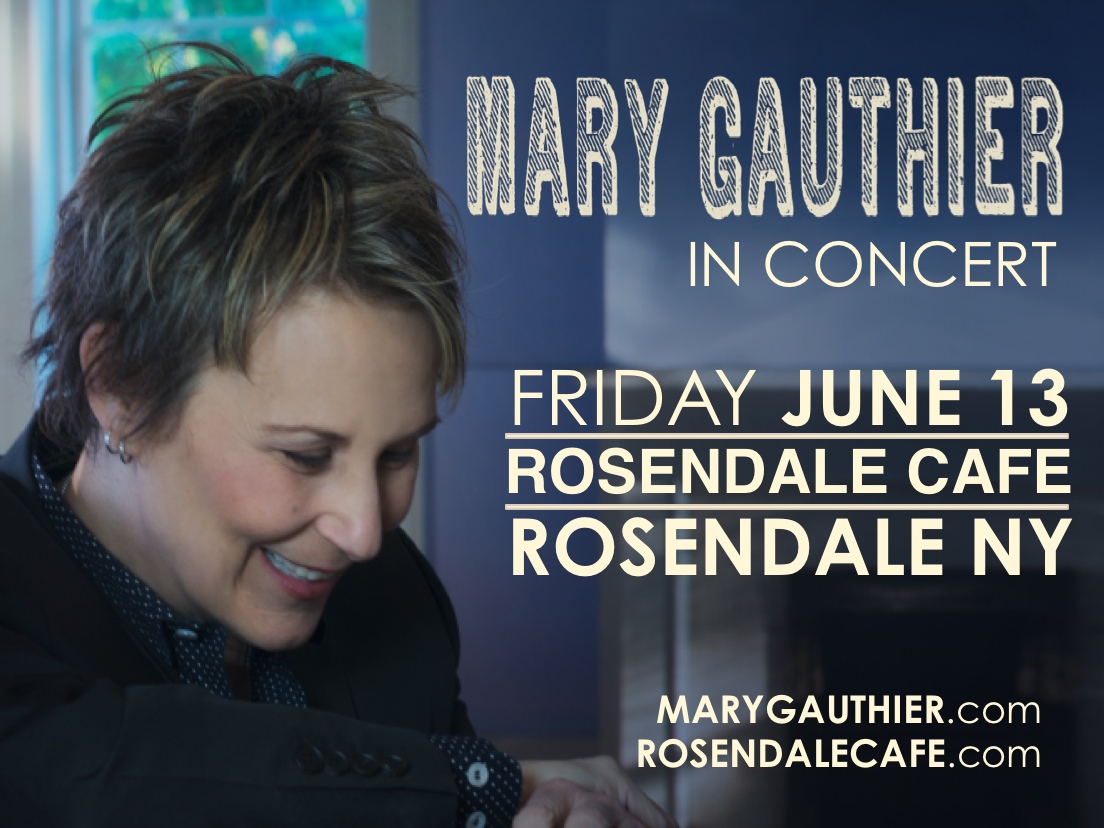Factual Adoption Research about the Confidentiality and Promises of Birthmother Privacy in Adoption Surrender Documents
The other day I was having a private discussion with an adoptee who said that I should stop saying that less than 1% of birthmothers really want to reject their adopted children. As I said, it was a private conversation that began off of a great FB conversation that I have started to addressed here and I am not bringing this up to shame anyone at all. It was a valid conversation and one I do not mind having. Anyway, it was said that I had no data to support the less than 1% claim and I actually do.
Back in 2010, I took all the available stats from the US States that have restored adult adoptee OBC access and crunched the numbers of applied for OBCs by adoptees to the numbers of relinquishing mothers who opted for “no contact” in some form. The final 2010 USA average percentage of birthmothers wishing NO CONTACT IN THE US was 0.993471%.
Now part of that conversation was my defending the percentage and saying that it was factual based on what we had available. I spent my time looking up the numbers and then doing the math because I wanted to have a real factual number as it an extremely effective tool to counteract that stupid argument “what about the birthmothers privacy” when discussing Adoptees original birth certificate access. In any case, I wished out loud in the conversation that we had better research.
I love it when my wishes come true!
Elizabeth Samuels Looks at Birth Mothers and Adoption Law
Elizabeth J. Samuels just published an excellent paper examining the common adoption mythology surround “promises of confidentiality” in regards to studying a collection of actual surrender documents from around the country. It is a perfect collection of factual evidence that complete puts an end to this nonsense of the “poor birthmother” hiding in fear from her adopted child. Plus, it puts the journey of birthmother activists in a contextual light in regard to the various legislation actions regarding Adoptee Rights. What’s even better is that this paper is community based and the footnotes alone show the involvement of the community and an accurate representation of our voices.
Now, normally I would take the whole adoption research document and post it in its digital form here for ease of access and search ability. However, when I emailed Elizabeth to request permission to do so she requested that I did not and I completely understand why. The paper is available in its entirety for free and can be downloaded as a PDF for your own collections. I ask that even if you do not read the whole thing (which I highly recommend doing!) PLEASE take a second and follow the link and hit download anyway!
The service where it’s posted keeps track of the number of distinct downloads, which shows how much interest there is in a paper and its important subject! We DO want to encourage more research on adoption related subjects!
So, if we want more serious adoption research, please download and share the link to Surrender and Subordination: Birth Mothers and Adoption Law
To tempt you, I have the abstract and some juicy excerpts which I found to be quite enlighten! I have kept in the footnotes sources to the excerpts I have highlighted to further supported the much needed information.
Surrender and Subordination: Birth Mothers and Adoption Law Abstract
“For more than thirty years, adoption law reform advocates have been seeking to restore for adult adoptees the right to access their original birth certificates, a right that was lost in all but two states between the late 1930s and 1990. The advocates have faced strong opposition and have succeeded only in recent years and only in eight states.
Among the most vigorous advocates for access are birth mothers who surrendered their children during a time it was believed that adoption would relieve unmarried women of shame and restore them to a respectable life. The birth mother advocates say that when they surrendered their children, their wishes were subordinated and their voices silenced. They say they want to be heard now as they raise their voices in support of adult adoptees’ rights to information in government records about their birth mothers’ original identities. Opponents of restoring access, in “women-protective rhetoric” reminiscent of recent anti-abortion efforts, argue that access would harm birth mothers, violating their rights and bringing shame anew through unwanted exposure of out-of-wedlock births. Opponents say they must speak for birth mothers who cannot come forward to speak for themselves.
Birth mother advocates respond that the impetus historically for closing records was to protect adoptive families from public scrutiny and from interference by birth parents, rather than to protect birth mothers from being identified in the future by their children. They maintain that birth mothers did not choose and were not legally guaranteed lifelong anonymity. They point out that when laws that have restored access have been challenged, courts have found neither statutory guarantees of, nor constitutional rights to, anonymity. They also offer evidence that an overwhelming majority of birth mothers are open to contact with their now grown children.
As a means of assessing these competing claims, this article analyzes the provisions in a collection of birth mother surrender documents assembled by the author—seventy-five mid-twentieth century documents executed in twenty-six different states. In order to establish the significance of the surrender document provisions with respect to these claims, the article first relates depictions by birth mothers of a journey from silence to legislative advocacy. The article then examines the conflicting claims about birth mothers that pervade legislative contests over adult adoptee access to original birth certificates. Finally, the article analyzes the provisions of the surrender documents. The analysis of the provisions definitively supports birth mother advocates’ reports that women were neither offered a choice of nor guaranteed lifelong anonymity. Their opponents’ contentions to the contrary, whether motivated by concern for birth mothers or other interests, reinscribe an earlier culture of shame and secrecy, subordinating women’s own wishes and silencing their newly raised voices.”
Please download and share the link to Surrender and Subordination: Birth Mothers and Adoption Law
My Favorite Batch of Adoption Facts Freshly Researched
Enough of this Birthmother Protection BS!
Original Birth Certificate access, or the practice of open access to adoptees birth records was “gradually eliminated by almost all of the states during the period from the late 1930s to 1990.5” The paper looks in great detail at the legislative efforts for Adoptee Rights and what Elizabeth aptly calls that “silencing subordination cloaked in benevolence” and a “woman-protective rhetoric.” IE: how OBC access must be blocked to “protect” the poor poor birthmothers.
Now, it has long been said that if there actually were relinquishment consent forms that clearly stated a true “promise of privacy” for the said birthmother, that various opponents would have that surrender document encased in gold and would be waving it around on a stick to keep the adoption records forever sealed. For this study, 75 adoption surrender documents were collected and the examination of the documents clearly state that “the impetus historically for closing records was to protect adoptive families from public scrutiny and from interference by birth parents, rather than to protect birth mothers from being identified in the future by their children;12 that birth mothers did not choose and were not legally guaranteed lifelong anonymity;13 and that an overwhelming majority of birth mothers are open to contact with their surrendered children.14 They point out that courts have found neither statutory guarantees of, nor constitutional rights to, anonymity for birth mothers, and that the documents birth mothers signed surrendering parental rights did not promise anonymity.15”
With the number of possible adult adoptees in this country over 6 million and with millions of mother forced to relinquish during the Baby Scoop Era, a sample of 75 documents does not seem that impressive. One must note that “the collection does not constitute a randomly selected sample, something that would be difficult to define as well as impossible to assemble….It consists of seventy-five documents from twenty-six states, spanning the years 1936 to 1990,17 with the largest number from the 1960s and 1970s./18”
The documents further demonstrate that “lifelong anonymity was not guaranteed.” Per the hopefully now known and common discussion that “birth mothers relinquished all their parental rights without even a guarantee that the child would be successfully placed for adoption, and the birth mothers did not retain any right to notice of future proceedings involving the child. The child could be kept in foster care or institutionalized, rather than placed for adoption, and would therefore retain his or her original birth certificate.82 Even in the case of a successful adoption, access proponents note, the original birth certificate would be sealed not at the time of relinquishment but only after finalization of adoption and issuance of an amended certificate, which frequently occurred many months later.83 ”
“If the child is not successfully placed for adoption, the state does not issue an amended birth certificate. The original certificate will remain the child’s birth certificate, showing the child’s birth name and—unless the birth mother used a false name—at least the birth mother’s name.”
Adoption Truth: Why Were Adoption Records Sealed?
The collection of surrender documents shows the true purpose of sealed records was to protect the “adoptee and adoptive families from public scrutiny, was to protect adoptive families from interference by birth parents.86 For example, the 1940 New Jersey bill to close adoption court records stated that it would assure adopting parents that “a parent or parents of the child adopted would not turn up at some future date to embarrass both them and the child and possibly even do harm.”87
And 40% of “surrender documents commonly contained a promise by the birth mother that she would not seek out her child.90 ” I have heard many adoptees wonder why their birthmother never tried to find them. The study shows that a full 40% were told that they never could, never should, and “she will not attempt to discover either the name or whereabouts of the child, or the names or whereabouts of the adoptive parents, and that she will not induce the child to leave the persons with whom the child is placed.” It was written into the Birthmother Rules.
Back to Percentages of Relinquishing Mothers Desiring Contact
I pulled out all the snippets that had data and sources for hard numbers already collected in regarding tp the percentage of Birthmothers that deny their grown found children.
“With respect to New Jersey searches on behalf of adoptees, the New Jersey Division of Youth and Family Services reported that 95% of the birth parents it contacted agree to some form of contact.114“
“According to the testimony of a New Jersey-based private investigator, in his experience reuniting 1,700 birth mothers and the children they surrendered, only 2% “of those mothers did not want to be found.”115
“A study published there (English and Welsh adoptees) in 2005 found that 93% of birth mothers who have had contact with their children were either “pleased” or “very pleased” and only 1% of birth mothers were not pleased.118
In Oregon, where access was restored through a statewide initiative,120 the state issued 5,565 original birth certificates and received 411 birth parents’ contact preference forms during the first year. Seventy-nine of the contact forms indicated a preference for no contact. After ten years, a total of 10,151 certificates had been issued and the total number of forms indicating a preference for no contact had increased from seventy-nine to eighty-five.121
In Alabama from 2000 to 2009, 4,227 adult adoptees accessed their certificates. Birth parents filed 207 contact preference forms, of which less than 1% indicated a preference for no contact.122
In New Hampshire, from the start of access implementation in 2005 to the end of 2011, 1,497 records were requested, seventy-six contact preference forms were filed, and twelve of the forms indicated a preference for no contact.124
In Maine, from the start of access implementation in 2009 through 2011, 1,131 original birth certificates were requested; thirty birth parent contact forms were filed, of which eight indicated a preference for no contact.125
The number above break down like this:
| state | OBC requests | No contact | % |
| Oregon | 10151 | 85 | 0.837356 |
| Alabama | 4227 | 40 | 0.946298 |
| New Hampshire | 1497 | 12 | 0.801603 |
| Maine | 1131 | 8 | 0.707339 |
| total | 17006 | 145 | 0.85264 |
General Adoption Statistics about OBC Access, Contact, & Adoption
“A 1990 review of adoption research described a “growing body of research that suggests that members of the adoption triad themselves do not see their interests as competing, much less [as] antagonistic.”
“Same 1990 review noted that surveys “reveal that nearly all birthparents are willing to be found” and the “vast majority of birthmothers . . . strongly support the release of information about themselves to the children/adults they relinquished.”136
“According to public opinion polling data for New Jersey, cited in testimony submitted by the Legislation Director of the AAC, “98[%] of New Jersey citizens ‘with an adopted family member view[ed] access to birth family information as important. Among those without an adopted family member, . . . 88% [saw] having access to biological family information as important.’ ”
“The director continued that this data “parallels national findings” in an earlier poll which found that 84% of Americans “believe adopted children should be allowed to view their adoption records upon becoming adults.”
The Numbers of Birthmothers in the USA
“In 1940, the birth rate for unmarried white women was 1.95%, escalating to 10.69% in 1970 and 31% in 1993.” 206
“The rate of relinquishment before 1973 was almost 20% for never-married white women under forty-five years of age,207 compared with a rate of less than 2% in the early 1990s.” 208
“As these rates shifted, experts abandoned the view that women could put the experience of surrendering a child entirely behind them.” 209
Please download and share the link to Surrender and Subordination: Birth Mothers and Adoption Law
Applied Footnotes to Surrender and Subordination: Birth Mothers and Adoption Law Exerpts
5. Elizabeth J. Samuels, The Idea of Adoption: An Inquiry into the History of Adult Adoptee Access to Birth Records, 53 RUTGERS L. REV. 367, 408–09, 416 (2001); ANN FESSLER, THE GIRLS WHO WENT AWAY 148, 154 (2006).6. Id. at 371–72. See also, infra text accompanying note 44.
12. Infra text accompanying notes 86–91.
13. Infra text accompanying notes 65–66, 72–85, and 101–03.
14. Infra text accompanying notes 104–125.
15. Infra text accompanying notes 77–91.
17. This period covers the years during which all but two states eventually denied adult adoptees access to their original birth certificates, and it concludes before a small number of states began restoring access. See Samuels supra note 3 at 369, 371–72.
18. See infra Appendix A.
82. For example, “[w]hen a birthmother relinquishes a baby she surrenders custody of that baby without a guarantee of a sealed record. If the baby is not adopted, the [original birth certificate] is not sealed . . . . ” Hearing on S. 611, supra note 54 (statement of Sen. Thomas M. McGee). Similarly, “If the child is never adopted, or the adoption is disrupted, the original birth record is available to the person named on it – no matter what was ‘promised’ to the relinquishing parents.” Romany, Comment to Attempting to Satisfy all on Birth Records in New Jersey, supra note 57 (Feb. 4, 2011, 11:20 AM).
83. For example, “The little known truth is that there can be no legal guarantee of secrecy even in allegedly ‘closed’ adoptions. This is because the altered birth certificate isn’t issued—and the original sealed—until an adoption is finalized.” Yooperjo, Comment to Attempting to Satisfy all on Birth Records in New Jersey, NJ.COM (Feb. 4, 2011, 2:13 PM), http://blog.nj.com/njv_guest_blog/2011/02/attempting_to_satisfy _all_on_b.html. See also, NJCARE Legislative Team, supra note 73 (“A legal adop- tion occurs many months after relinquishment, if it occurs at all. Thus, if sealing records were intended to protect the privacy of birth parents, the act of sealing records would have had to occur at the time of relinquishment.”).
86. Judy Foster, State Should Pass Adoptees’ Birthright Bill, THE DAILY JOURNAL (Vineland, N.J.), Sept. 13, 2008, at A (“[T]he New Jersey bill that sealed records in 1940 stated it was ‘to protect adoptive parents from the birth parents coming back and possibly causing harm or embarrassment.’”); Hearing on S. 611, supra note 54 (state- ment of Deborah A. Ellis, former Dir. Of the ACLU of N.J.) (“As the states began to close records to the parties themselves, they did so not to provide lifelong anonymity for birth mothers, but the other way around—to protect adoptive families from possible interference by birth parents.”).87. A. 188, 164th Leg. (N.J. 1940) (enacted as ch. 210, 1940, N.J. Laws 870).
1. To keep out of the hands of any person who would have no interest in the subject matter, the facts relating to adoption.
2. To assure people adopting children that a parent or parents of the child adopted not turn up at some future date to embarrass both them and the child and possibly even do harm. A parent may surrender a child in good faith and subsequently have a change of heart or mind and upon discovering the whereabouts of the child the problem may become an embarrassing one. Then too, there is always the danger of such information being used illegally.
3. To eliminate the possibility of persons using information relating to adoption illegally and for extortion purposes. Id. See also Hearing on A. 3237, supra note 21 (statement of Assemb. Louis Manzo) (the legislative intent behind sealing records was“mainly and solely to protect the adopting parents and the child from unwanted contact by the birth parent. How it ever got construed to the point that we are invading someone’s privacy is beyond me.”).
90. NJCARE Legislative Team, supra note 73.
92. Hearing on A. 3237, supra note 21 (statement of Marlene Lao-Collins, Dir. for Social Concerns of the N.J. Catholic Conference).
114. Letter from Delores Helb, Adoption Registry Coordinator, State of N.J., Dep’t. of Human Servs., Div. of Youth and Family Servs., to N.J. Senator Joseph F. Vitale, (Dec. 13, 2004) (on file with the author).
We currently have approximately seven thousand birth family members registered with us. By registering, they have already expressed their willingness to have contact with the adoptee, should that person request it. In addition we receive about fifteen to twenty requests per month from adoptees seeking information about, and contact with, their birth family. . . . Despite the fact that the majority of parents we search for are not registered with us, 95% do agree to some form of contact with the adoptee. Though this percentage has not changed since 1996, newer technology has brought us greater success in the number of people we have been able to locate. Id.
115. Hearing on A. 3237, supra note 21 (statement of James (Joe) Collins).
116. See, e.g., id. (statement of Alison Larkin, adopted adult who has written a novel and performed comedy about adoption).
117. Children Act, 1975, c.72, § 26 (allowing adoptees at age eighteen to obtain birth records).
118. JOHN TRISELIOTIS ET AL., THE ADOPTION TRIANGLE REVISITED: A STUDY OF ADOPTION, SEARCH AND REUNION EXPERIENCES 124 (2005).
120. OR. REV. STAT. ANN. § 432.240 (Westlaw through End of the 2012 Reg. Sess. And ballot measures approved at the Nov. 6, 2012 General Election).
121. Oregon Health Authority, Measure 58 History, Pre-Adoption Birth Records, Measure 58 Update, OREGON.GOV, http://public.health.oregon.gov/birthdeathcertificates/get vital records/pages/58update.aspx (last visited Apr. 1, 2013). During a year and a half of litigation, when implementation of the law was stayed, a backlog developed of 2,272 requests. When the state began issuing the certificates, state officials estimated that some 25,000 adoptees were eligible to request copies of their birth certificates. Bill Graves, Court Hands Adoptees A Big Victory, THE OREGONIAN (Portland), May 31, 2000 (Local Stories section), at A1.
122. EVAN B. DONALDSON ADOPTION INST., supra note 112, at 28.
124. Vital Records, Pre-Adoption Birth Records, Track the Numbers, N.H. SEC’Y OF STATE, http://www.sos.nh.gov/vitalrecords/Preadoption_birth_records.html#progress (provides downloadable year-by-year statistics) (last visited Apr. 1, 2013).
125. E-mails from Rep. Roberta Beavers to the author (Jan. 31, 2012 & June 18, 2012) (on file with the author); e-mail from Sharon Wright, Adoption Coordinator, Me. Ctr. for Disease Control and Prevention, to the author (June 25, 2012) (on file with the author). See also Legislation, Reform Adoption Data, Abortion and Adoption Data from States Who Have Enacted Access, AM. ADOPTION CONG., http://www.american adoptioncongress.org/reform_adoption_data.php (last visited Apr. 1, 2013).
Birth parents in Delaware in adoptions before 1999, and in Illinois in adoptions after 1946, may deny release of their identifying information by state records custodians. (In Delaware the denial must be renewed every three years, and in Illinois a denial is ineffective after the death of the birth parent.) DEL. CODE ANN. tit. 13, § 923(b)–(c) (Westlaw through 78 Laws 2012, chs. 204–409 and technical corrections received from the Delaware Code Revisors for 2012 Acts); 750 ILL. COMP.STAT. ANN. § 50/18.1b(e) (Westlaw through P.A. 97–1157, with the exception of P.A. 97–1150, of the 2012 Reg. Sess.). In Delaware between 1999 and 2006, 695 adult adoptees accessed their birth certificates, while eighteen requests were blocked by a birth parent disclosure veto. EVAN B. DONALDSON ADOPTION INST., supra note 122, at 28.
In Illinois, the most populous state to restore access (estimated population of 12.9 million, State & County QuickFacts, supra note 123), adoptees adopted before 1946 became eligible in May 2010 and all adult adoptees became eligible in Nov. 2011 to apply for copies of their original certificates. 750 ILL. COMP. STAT. ANN. § 50/18.1b(e). Some 250,000 adoptees are eligible to apply for birth certificates, according to Illinois public health officials. Lolly Bowean, Opening Doors to Adoptees’ Pasts, CHICAGO TRIBUNE, Mar. 18, 2012, at 1. Through 2012, the state issued 8,145 original birth certificates, 47 of which had some birth parent information redacted. Of 620 birth parent preference forms filed, forms that allow both for contact preferences and disclosure preferences, 163 filing birth parents indicated a preference for contact, two indicated a preference for no contact, and 455 requested not to be contacted and for some information about herself or himself be redacted.
Letter from George S. Rudis, Ill. Dep’t. of Pub. Health Deputy State Registrar, to the author (Jan. 15, 2013) (on file with the author); 750 ILL. COMP. STAT. ANN. § 50/18.2 (Westlaw through P.A. 97–1157, with the exception of P.A. 97–1150, of the 2012 Reg. Sess) (showing the birth parent preference form).
136. Madelyn Freundlich, Confidentiality Becomes Political: The New Strategy in Opposition to Open Records, AM. ADOPTION CONGR. DECREE, Winter 1997/Spring 1998, at 1, 3, 5. See also Burton Z. Sokoloff, Antecedents of American Adoption, ADOPTION,Spring 1993, at 17, 24.
206. U.S. DEP’T. OF HEALTH & HUMAN SERVS., REPORT TO CONGRESS ON OUT-OFWEDLOCK CHILDBEARING Figure I–3 (1995). Analyses of rates for all women reveal significantly different rates at different age and education levels. Jason DeParle & Sabrina Tavernise, Unwed Mothers Now a Majority Before Age of 30, N.Y. TIMES, Feb. 18, 2012, at A1 (article cites a study that shows (for white women ages twenty to thirty) figures of 8% for college-educated women, 34% for women with some postsecondary schooling, and 51% for women with a high school diploma or less). See generally CHARLES MURRAY, COMING APART: THE STATE OF WHITE AMERICA, 1960–2010 (2012); KATHRYN EDIN & MARIA J. KEFALAS, PROMISES I CAN KEEP: WHY POOR WOMEN PUT MOTHERHOOD BEFORE MARRIAGE (2011); Kathryn Edin & Joanna M. Reed, Why Don’t They Just Get Married? Barriers to Marriage among the Disadvantaged, 15 FUTURE OF CHILDREN 117, 117–30 (2005).
207. STEPHANIE J. VENTURA & CHRISTINE A. BACHRACH, CTRS. FOR DISEASE CONTROL & PREVENTION, NONMARITAL CHILDBEARING IN THE UNITED STATES, 1940–99, Figure 22 (2000).
208. Id. at Figures 2 & 22. Only the rates for white women are provided in the text because black women have never surrendered children for adoption in significant percentages. The rate before 1973 was 1.5%, and it declined between then and 1995. Id. at Figure 22.
209. Samuels, supra note 3, at 418–19.






“… “The rate of relinquishment before 1973 was almost 20% for never-married white women under forty-five years of age,207 compared with a rate of less than 2% in the early 1990s.” 208
“As these rates shifted, experts abandoned the view that women could put the experience of surrendering a child entirely behind them.” 209 … ”
Which, of course, coincides with the new and improved open adoption experiment.
Oh completely.. or as I like to look at ti: their target market of “producers” was drying up and threatening their profit margin. They had to expand their reach and improve their offerings to keep the supply sources in order to meet the growing demand for babies.